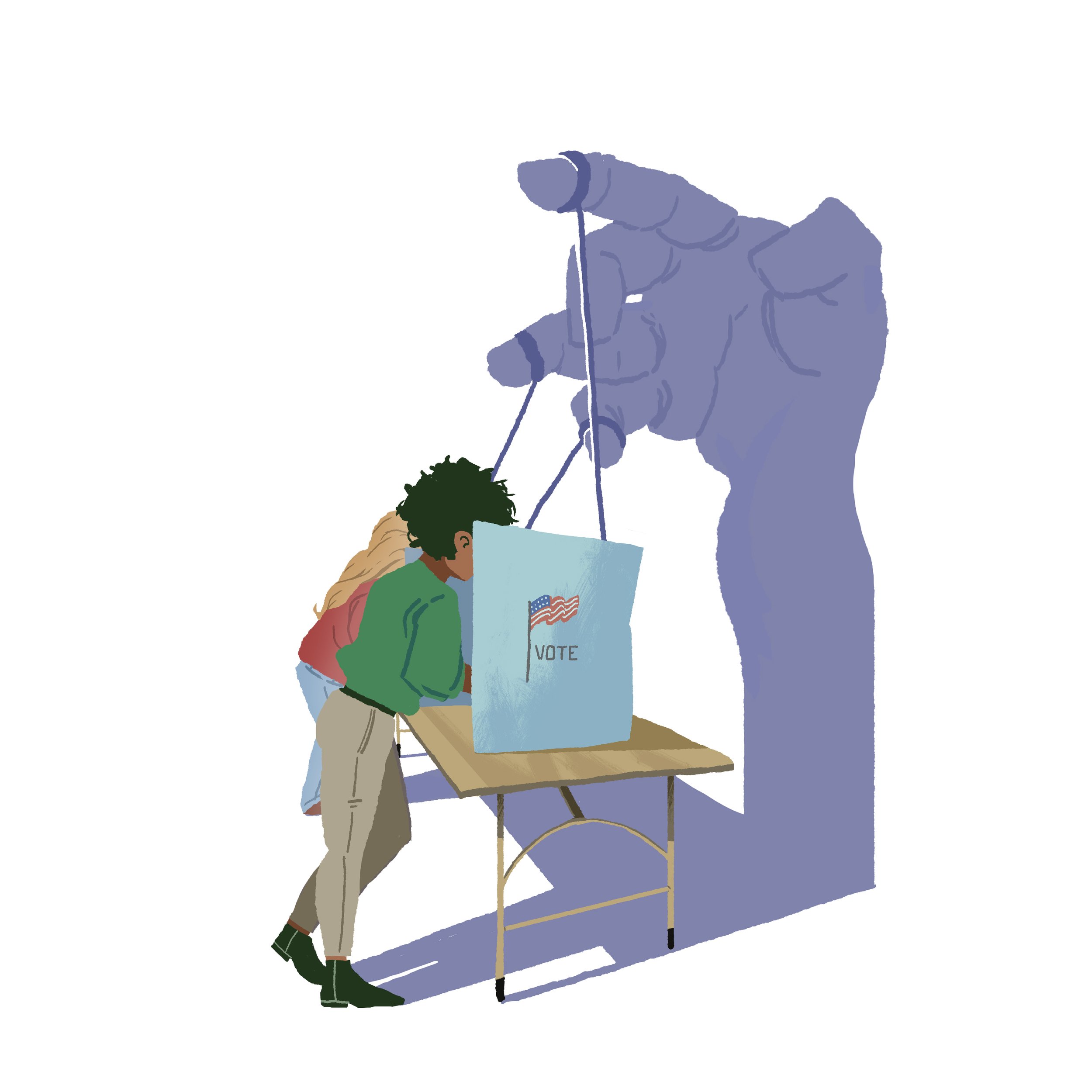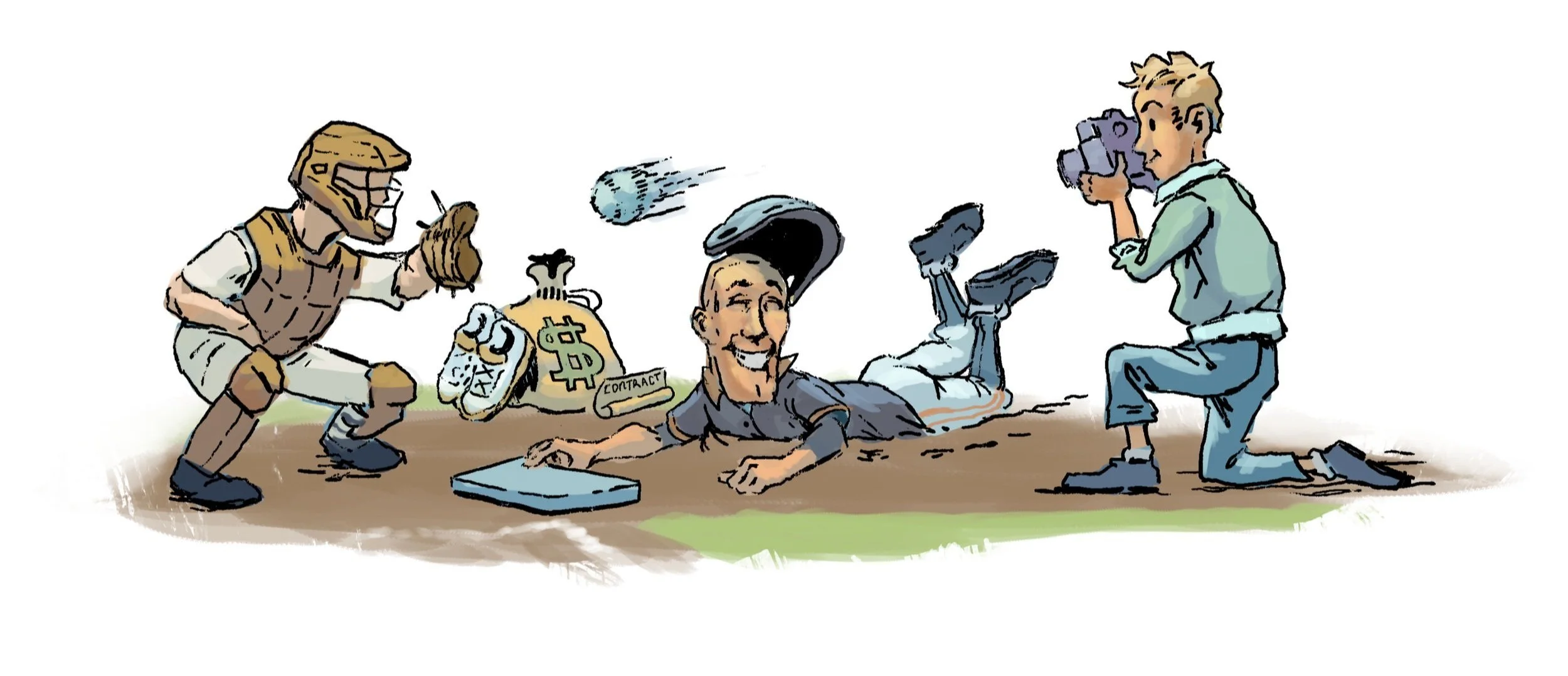Illustration by Thuan Pham
Many experts and analysts have written and spoken about the causes and impact of the Russo-Ukrainian War, filling the airwaves with answers to our questions. Though not recognized as experts, nor recent migrants, three Wichitans agreed to share their experiences as Belarussian/Ukrainian/Russian transplants, each qualified because of time spent absorbing the traditions, beliefs, and mettle unique to the people of those countries.
Edward Genin
Of the over 425 people in attendance, Edward Genin’s perspective on Vladimir Putin’s war with Ukraine struck a discordant chord, he agrees with much of what former Wichitan, CIA Director, and Secretary of Defense Robert Gates conveyed as the inaugural speaker for the Craig Barton Speaker Series at Wichita State University’s Wiedemann Hall on April 27, but he disagreed with the tone and lack of cultural knowledge a non-Eastern European native possesses when discussing the War.
Perhaps an issue of time restraints or omission, Genin wanted to hear more from Gates during his WSU appearance about the extent that Putin and other Russian leaders “have been engineering aggressive imperialistic actions very deliberately for decades, like incremental gains in Georgia, Crimea, Donbas.” More about Putin’s secret communications with China. More about the Russian government’s "bait and switch" tactics, when, for example, citizens are lured by 3 to 6-month contracts to work at shipyards, but then placed into uniforms and combat in Ukraine.
Genin was born in Minsk, Belarus, then migrated with his parents and sibling in 1989 to the United States, where he and his family worked hard to build his business acumen. Currently, Genin operates an outsourcing entity located in Ukraine, while he, his wife, and son live in Wichita.
Genin has other theories about Eastern European culture and its impact on regional wars, and vice-versa. When asked about the cause of the Russian invasion of Ukraine in February of this year, Genin said he believes that all wars happen in part to boost nations’ economies, to create infrastructure, and to collect more taxes to build a revenue base.
“War starts for full employment to produce military equipment,” he said. “War happens when a nation has limited resources. Russia is looking for more land, more resources in Ukraine.”
Genin is skeptical about those who profit from war, those who may place profits over patriotism. “Who is making the money, where will the assets go?” Genin points to U.S. and Soviet failures in Afghanistan and other prior war zones to recover military equipment and other assets as a major concern for Western nations that are currently supplying Ukrainian forces with military weaponry. “Those weapons often wind up in enemy hands.”
Ukraine once was a launching point for Soviet missiles, including nukes, until a 1994 agreement led to the transport of those weapons to Russia. Ukraine’s agreement to relinquish the world’s third-largest nuclear arsenal, which the country inherited from the collapsed Soviet Union, and transfer all nuclear warheads to Russia for dismantlement. The signatories of the memorandum pledged to respect Ukraine’s territorial integrity and inviolability of its borders, and to refrain from the use or threat of military force. Russia breached these commitments with its annexation of Crimea in 2014 and aggression in eastern Ukraine, bringing the meaning and value of security assurance pledged in the Memorandum under renewed scrutiny.
“Russia has a tendency to point blame at previously celebrated leaders turned evil, this is how state media portrays Gorbachev, hard-liners believe he should have never given up the entire Soviet empire of satellite countries.”
Genin, who regularly monitors events in the affected areas of Eastern Europe through news sources and human contacts said Russia will play the long game by gaining those resources and then avoiding economic sanctions by bartering with other nations, like China.
That said, Genin doesn’t believe this will necessarily save Putin’s status. “At some point, Putin will be replaced. Oligarchs will become sick of the war in Ukraine, the economic freeze on their assets will hurt them to the point of pressuring the Kremlin for change.
Though Gates did emphasize in his speech that Putin is risking his reputation on rebuilding the Soviet Union, post the 1991 acceptance by many nations that the Cold War was over, Gates understated Russian growth in power during the interim, according to Genin.
“Unhappy soldiers will come back to Russia with guns and ammunition, they don’t want an unstable Russia. It’s about who controls the button through the Russian channels.”
“The reason Russia is not performing well is that Ukrainians are fighting for their land, and Russian soldiers are their brothers, so Russian morale is low.”
“This war will continue,” beyond an inevitable truce or peace treaty, Genin said. “The pride of the Ukrainian people will go for generations, much like the Palestinian-Israeli battle for territory.”
Rabbi Shmulik Greenberg
Worldwide, Jewish organizations are assisting Ukrainians of all faiths to migrate to safer countries, Rabbi Shmulik Greenberg is leading that movement in Wichita. Greenberg once led a congregation in the major Black Sea port city of Odessa, Ukraine, the third most populous with just under one million people.
Though his Jewish grandparents had been rounded up during World War II, and now there are elderly Jewish people in Odessa that feel like they could be targeted for a second time, Greenberg said that he believes the 30,000 Jews who have migrated from Odessa are escaping the violence of war in Ukraine, not avoiding anti-Semitism.
“Putin opened Jewish schools across Russia, and today it's closer to a Jewish Renaissance in that region of the former Soviet Union,” Greenberg said. “But obviously the war today is a travesty, it's terrible.”
Greenberg wanted to point out that he “feels very much that people from all across the world have stepped up to the plate and contributed funds and goods so that Jews and non-Jews alike do have the ability to escape the dangers of the War.”
“In America, it's easy to lose focus, life continues,” Greenberg said. “But not in Odessa and in Ukraine, people need as much help as they did when the War began.
“People need to not forget in terms of refugees escaping Ukraine.” he continued. “Most of them are not looking long-term at the countries close by as much as they are traveling to Germany, Israel, and the United States. Most will not return to Ukraine.”
Ludmilla Fridman
As with the previous two contributors, Ludmilla Fridman sees the War in terms of Ukraine’s urgency to make immutable its right to self-determination. “Ukraine needs help militarily,” she said. “It should win to become its own country again, to join NATO.”
Fridman was born in Chernivtsi, Ukraine, in the western part of the country near the border of Romania. As a teenager, Friedman and her family left to live in Moscow, her home for several more years until coming to the United States in 1981.
A few years ago, Fridman returned to Ukraine and found virtually nobody that she knew was left. She was shocked that the Soviet Union dissolved, and that attitudes changed. “The people were so hospitable, it was very different than before.” For example, Fridman said, in the service industry, when approaching an employee in a store, she used to receive rude treatment because she was Jewish. She felt that Jews were always “under watch,” and given the history of the Holocaust, and Eastern European pogroms, caution might be expected. However, during her visit, well after the Iron Curtain was lifted, she felt that “Ukrainians are more comfortable with the Jewish community and that communications are much better between Western and Eastern European countries.” No derogatory comments nor nasty looks. “Zelensky is President, and other Jewish people are in his government,” she said. “Many Jews fight for Ukraine, they believe that it is their country.”
The same applies within Russia, Fridman said that there's a higher level of well-being not any indication anti-semitism Jewish Freedman said the Moscow is full of Islamic people and that Putin probably has more on his mind for “this is the least on his mind is too worried about religion,” But tolerance has its limits, especially if individuals or groups contest governmental actons. “It is dangerous to speak out against the war, people wind up in jail,” she said, “I just read an article about a professor who was arrested for supporting Ukraine.” Similarly-themed stories abound found with a quick internet search.
Though seemingly more religiously tolerant, Fridman holds no illusions about the long-term intent of her former country. “In my eyes, Russia has always been an invader.” She believes that Russia is continuously trying to expand and defend its country, often justifying forward military action by saying that other nations are trying to invade its land. “This is what Stalin meant after World War II, and this is what Putin tells the people in Russia today.”
Propaganda runs thick in wartime, when Fridman heard about the February Russian campaign suggesting that one goal of the Russo-Ukrainian War is to remove a Neo-Nazi movement in Ukraine, she women said that “it's a lie, the Ukrainian people are just people. That's only a pretext to invade.” Fridman does believe that Russian propaganda is very powerful. She remembers as a teenager hearing the pro-Soviet Union messages and they filled her with pride and inspiration. But after leaving to live in the U.S., her viewpoint changed about one-sided government media. “Listening to the state-controlled TV station for a week is just like listening to Goebbles” during the Nazi regime of World War II.
In terms of Russian socialism, Fridman’s experiences portray the economic system as more of a kleptocracy. “Russia steals from the top down.” She says that people refer to it as socialism, but taxes are both transparent and hidden, and when a service is described as “free,” that means “it is of very poor quality.”
As for dramatic social and economic change after the collapse of the Soviet Union, “Look at how fast satellite nations became independent,” she said. “Their real self showed up.”
All three participants believe that a Ukrainian victory is essential to not only stop Russian expansion, but also to provide something the Ukrainian people are demonstrating they’re willing to die for, their freedom.




















